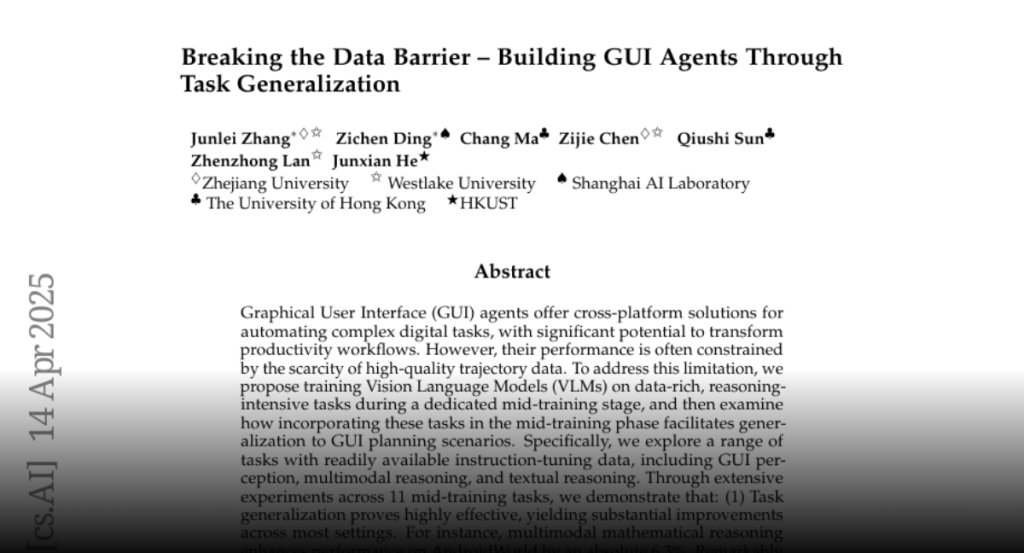Graphical User Interface (GUI) agents offer cross-platform solutions for
automating complex digital tasks, with significant potential to transform
productivity workflows. However, their performance is often constrained by the
scarcity of high-quality trajectory data. To address this limitation, we
propose training Vision Language Models (VLMs) on data-rich,
reasoning-intensive tasks during a dedicated mid-training stage, and then
examine how incorporating these tasks facilitates generalization to GUI
planning scenarios. Specifically, we explore a range of tasks with readily
available instruction-tuning data, including GUI perception, multimodal
reasoning, and textual reasoning. Through extensive experiments across 11
mid-training tasks, we demonstrate that: (1) Task generalization proves highly
effective, yielding substantial improvements across most settings. For
instance, multimodal mathematical reasoning enhances performance on
AndroidWorld by an absolute 6.3%. Remarkably, text-only mathematical data
significantly boosts GUI web agent performance, achieving a 5.6% improvement on
WebArena and 5.4% improvement on AndroidWorld, underscoring notable cross-modal
generalization from text-based to visual domains; (2) Contrary to prior
assumptions, GUI perception data – previously considered closely aligned with
GUI agent tasks and widely utilized for training – has a comparatively limited
impact on final performance; (3) Building on these insights, we identify the
most effective mid-training tasks and curate optimized mixture datasets,
resulting in absolute performance gains of 8.0% on WebArena and 12.2% on
AndroidWorld. Our work provides valuable insights into cross-domain knowledge
transfer for GUI agents and offers a practical approach to addressing data
scarcity challenges in this emerging field. The code, data and models will be
available at https://github.com/hkust-nlp/GUIMid.

